Inside the Rapid train.


First stop. Fushimi Inari Shrine. Admission is free. It’s is located just outside JR Inari Station, the second station from Kyoto Station along the JR Nara Line.
Fushimi Inari Shrine is the most famous among the thousands of shrines dedicated to Inari across Japan. Inari is the Shinto god of rice, and foxes are thought to be his messengers. It is also famous for the countless torii gates, offerings by worshipers. These are etched with Chinese and/or Japanese characters of names of businessmen who made those offerings.
Below picture teach us how to cleanse ourselves before entering the shrine. Since temples and shrines are sacred places, everyone is expected to cleanse ourselves before entering. There, you'll find a ladle. Draw some water with it to rinse your mouth and spit it, and wash your hands, But please, DO NOT DRINK IT... the concept is to cleanse ourselves not to quench our thirst!! hehe :)






At the entrance of the Shrine



 Toss a coin into the offering box and pull on the rope to ring the bell, which is to make the gods hear you and make a wish. Bow and clap loudly twice then bow again after making a wish.
Toss a coin into the offering box and pull on the rope to ring the bell, which is to make the gods hear you and make a wish. Bow and clap loudly twice then bow again after making a wish.








The trail lead into the forest of the sacred Mount Inari. The thousands of torii gates along the entire trail are donations by individuals and companies, and the donator's name are inscribed on the back of each gate. We did not complete the entire trail as it will take around 2 hr to complete it. Anyway it's the same old torii gates for the whole trail.







 Heavy stone. Our wish will come true if the stone is light when we carry it
Heavy stone. Our wish will come true if the stone is light when we carry it Close view of the magical stone
Close view of the magical stone



 Shops selling souvenirs along the perimeter of the shrine
Shops selling souvenirs along the perimeter of the shrine
 Inari station
Inari stationBack to Kyoto station and lunch at Katsakura Tonkatsu located at Cube 11F Kyoto Station. The food is so disappointing, nothing comparable to the Katsakua Tonkatsu at Takashimaya Shinjunku






View of Kyoto Train Station.
It is the city's transportation hub served by JR Railways and a few private railway and subway Co. There's also a large bus terminal for city buses and long distance highway buses. Beside the station facilities, the building's 15 floors offer several other attractions including a Hotel, art museum, a theater and vast array of shopping and dining options like Isetan, Porta Underground shopping Mall etc. The futuristic design of Kyoto station was designed by Hara Huroshi, a well known architect in Japan.
It is the city's transportation hub served by JR Railways and a few private railway and subway Co. There's also a large bus terminal for city buses and long distance highway buses. Beside the station facilities, the building's 15 floors offer several other attractions including a Hotel, art museum, a theater and vast array of shopping and dining options like Isetan, Porta Underground shopping Mall etc. The futuristic design of Kyoto station was designed by Hara Huroshi, a well known architect in Japan.

 Kyoto Tower. It is an observation tower and is the tallest structure in Kyoto.
Kyoto Tower. It is an observation tower and is the tallest structure in Kyoto. At Shijo station. Signboard showing the direction to the various attractions.
At Shijo station. Signboard showing the direction to the various attractions.Nishiki Market street - It can be reached on foot in less than 5 minutes from Shijo Station (4 mins from Kyoto Station). The subway in Kyoto is not covered by the JR pass and the ticket for the subway is damn ex. Around 150 to 200 yen for a 2 to 3 stations ride.
Nishiki Market Street is known as Kyoto's Kitchen. It is a narrow, shopping street, lined by more than one hundred shops. Various kinds of fresh and processed foods including many Kyoto specialties, such as pickles, Japanese sweets, dried food, sushi, and fresh seafood and vegetables are sold.
Nishiki Market Street is known as Kyoto's Kitchen. It is a narrow, shopping street, lined by more than one hundred shops. Various kinds of fresh and processed foods including many Kyoto specialties, such as pickles, Japanese sweets, dried food, sushi, and fresh seafood and vegetables are sold.
We stopped at almost every shops, trying samples, buying nice food and local products.





















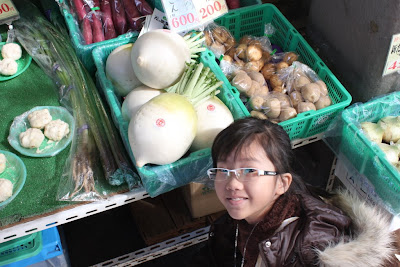




 A quail egg is covered by the head and body of the octopus.
A quail egg is covered by the head and body of the octopus.



A temple at the end of the market street.

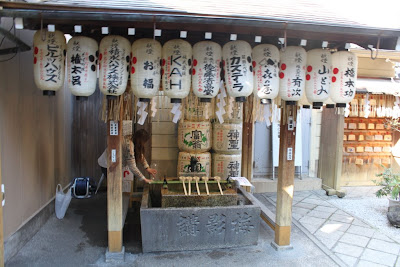




There's a shopping street at the end of the Nishiki Market street. IMO, Kyoto seems like a better place to shop as compared to Osaka. The clothes here are much cheaper.

 Nice Oyster stall at Nishiki market street. Around 200yen a piece. Open, wash, cut and cook right under your eyes. Super fresh.
Nice Oyster stall at Nishiki market street. Around 200yen a piece. Open, wash, cut and cook right under your eyes. Super fresh.




We took bus no. 207 from Shijo Station to Kiyomizudera Temple. It's a flat rate of 220 yen for adult and 110 yen for children. Get off at Kiyomizu-michi bus stop, from where it is a ten minute uphill walk to the temple.
 Inside the bus
Inside the bus

Kiyomizudera is one of the most famous temples of Japan. Not a single nail was used in the entire structure. It takes its name from the waterfall within the complex, which runs off the nearby hills. Kiyomizu means clear water, or pure water.
IMHO, this is probably the most interesting among all temples, aside from the siong siong uphill walk from the bus-stop to the temple.
 Shops selling souvenirs and local food products
Shops selling souvenirs and local food products






 Cleansing ourselves again
Cleansing ourselves again

 Entrance fee: 300 yen
Entrance fee: 300 yen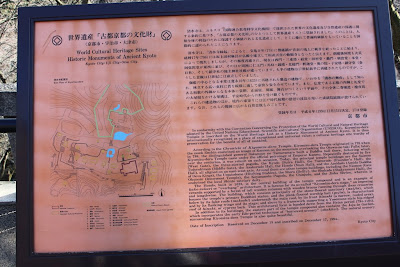
 Cleansing ourselves again. Think we have become very pure already. :p
Cleansing ourselves again. Think we have become very pure already. :p



 Making our wish again.
Making our wish again. The Otowa Waterfall is located at the base of Kiyomizudera's main hall. Its waters are divided into three separate streams, and visitors use cups attached to long poles to drink from them. Each stream's water is said to have a different benefit, namely from left to right: wisdom, beauty and longevity. However, drinking from all three streams is considered greedy and bad luck will befall on that person.
The Otowa Waterfall is located at the base of Kiyomizudera's main hall. Its waters are divided into three separate streams, and visitors use cups attached to long poles to drink from them. Each stream's water is said to have a different benefit, namely from left to right: wisdom, beauty and longevity. However, drinking from all three streams is considered greedy and bad luck will befall on that person.

 The view of the Kiyomizudera. Not a single nail was used to construct this temple.
The view of the Kiyomizudera. Not a single nail was used to construct this temple.


At the Otowa Waterfall. Queuing up to drink the holy water.

So hi-tech. There's even a ultra violet sterilizer located at the waterfall to sterilize the cup after use.


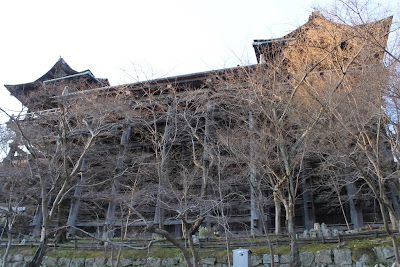
Bought quite a lot of local products from this shops for our loved one and friends.




Kyoto Ramen Koji (京都拉麺小路) is a Ramen street which has 7 Ramen restaurants, cafe, a Takoyaki restaurant and a Hamburger restaurant from Sasebo. You can try any kind of Ramen all over Japan at Kyoto Ramen Koji. If you are a Ramen lover and come to Kyoto, Kyoto Ramen Koji is a must try. Kyoto Ramen Koji is on the 10th floor at Isetan which is a department store at Kyoto station.
We tried Tsukemen Tetsu after seeing positive reviews from the net. The noodles and soup are served in separate bowls. We will need to dip the noodles in the soup before eating.
We tried Tsukemen Tetsu after seeing positive reviews from the net. The noodles and soup are served in separate bowls. We will need to dip the noodles in the soup before eating.
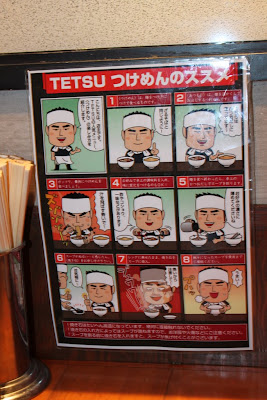 Instructions on how to eat the Ramen
Instructions on how to eat the Ramen





If the soup become cold, the diner can request for a hot stone to put in the soup. It's quite fascinating to watch the hot stone dropped into the soup. Steam was released instantly and the soup become hot.


 Nice juicy and watery egg
Nice juicy and watery egg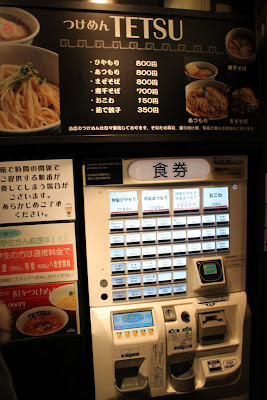 The Ramen is ordered from this machine
The Ramen is ordered from this machine
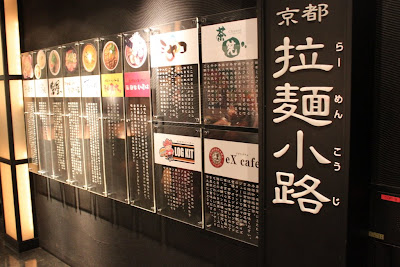

We will be shortening our trip and returning to S'pore on Weds morning (supposed to depart on Fri evening). Will be flying back from Kansai intl (Osaka) as it's actually not very safe to return to Tokyo due to the aftershock and possible radiation leak. Have been receiving calls from closed one persuading us to return asap. Didnt want to make them worried anymore so decided to shorten our trip. Sigh. Air tickets are damn ex. $3700+ for a one way ticket via SQ for the 4 of us. Hope we can claim this amount from our travel insurance. Many tks to Alison for helping us to book the flight back.
No comments:
Post a Comment